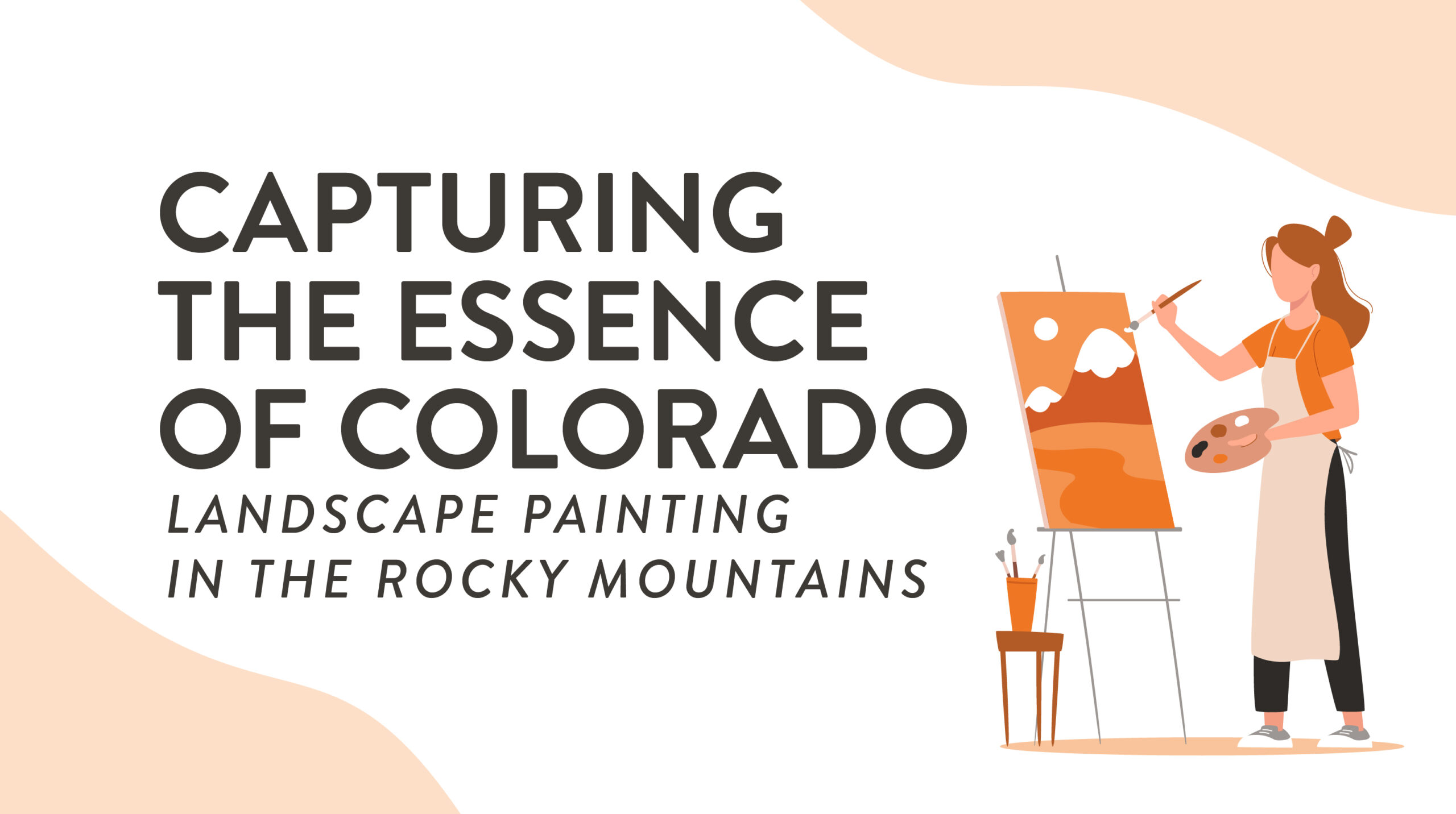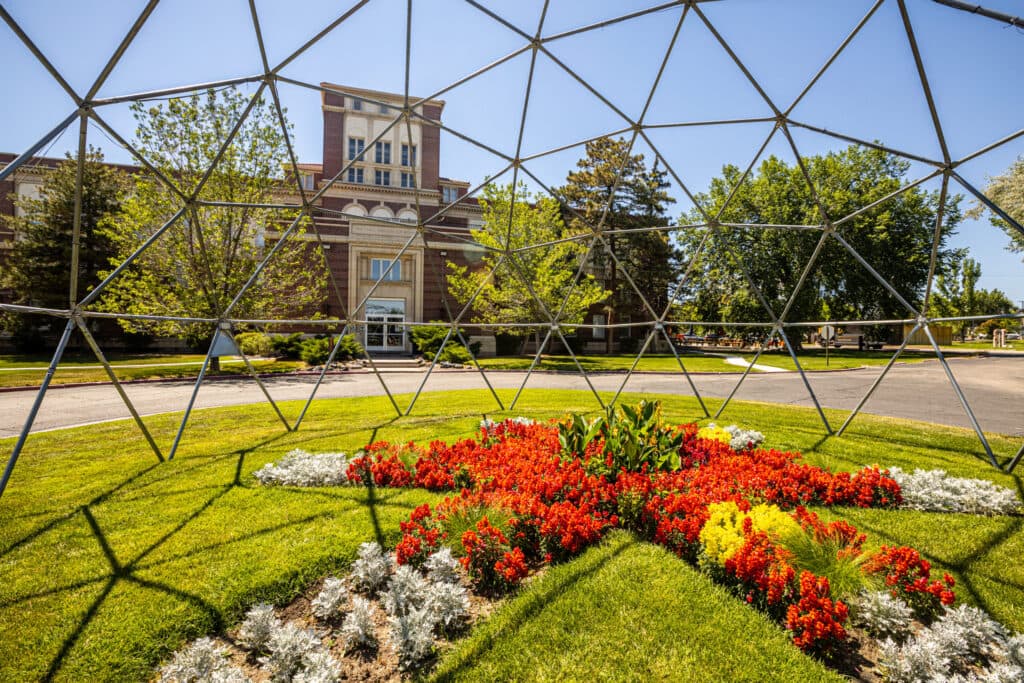It’s no secret that Colorado is known for its breathtaking sceneries, which makes it a perfect destination for those seeking to learn landscape painting and become landscape artists. The Rocky Mountains make the ideal backdrop along with Colorado’s flowing rivers, aspen tree groves, and wildflower filled valleys. No matter the season or time of year, Colorado’s beauty is just waiting for artists to explore.
What is Landscape Painting?
According to Britannica, landscape painting is the depiction of natural scenery in art, including mountains, valleys, bodies of water, and forests. Landscape painting has been around formally since the 16th century, when it was mostly depicted in backdrops behind biblical figures. By the 17th century, landscape painting took off in the Netherlands, then by the 18th century, its popularity moved to England and France. By the 19th century, landscape painting became a respected genre of art across Europe and North America. Top landscape artists at this time included John Constable and J.M.W. Turner of England, who were masters at capturing atmospheric qualities of the weather onto canvas. Around this time, a practice called plein air was adopted by landscape artists, which involved painting directly outdoors in nature.
How to Paint a Landscape?
Picking up a paintbrush and attempting a landscape painting can be an intimidating feat. To help set yourself up for success, we recommend the following. First, pick your subject. Are you interested in painting mountains? The countryside? Hone in on your selected location and then make a call on whether you will be painting in plein air (on location) or if you will be using a photograph as your guide.
Second, don’t worry too much on the details at first, this will come later in the process. Start with a simple sketch of the landscape. According to Draw Paint Academy, “You should try to think about the elements in your scene not as clouds, trees, water, and grass but rather as various shapes, lines, and colors.”
Then, decide on your color palette. Remember, it’s important to make subtle variations of a limited palette. You don’t want to go crazy with too many colors in your landscape painting, as this will lead to a lack of depth in your artwork. Next, give an illusion of numbers. Don’t paint things as individual elements within your artwork, paint them as one and use color variations to add depth and interest.
Lastly, embrace imperfections! As you start learning this new art practice, recognize that practice makes perfect.
The Colors of Colorado:
- Palette Inspired by Nature
- As you embark on Colorado landscape painting, it’s safe to say your color palette will align with the natural tones of the earth, including neutrals, browns, greens, blues, and grays. Look to your surroundings first to create your desired palette and create shade variations from there.
- Seasonal Changes
- Based on the time of year in Colorado, you may have a few additional colors to add to your palette. For example, fall boasts wondrous yellow aspen trees, while the end of summer welcomes pinks, oranges, yellows, and reds from the state’s glorious wildflowers. These added colors really help a viewer easily understand the time of year in your finished landscape painting.
Composition Techniques:
While painting in Colorado, you will likely find the Rocky Mountains as a focal point to your work. That said, how do you decide where the main mountain peak should be displayed on your canvas? Like other artistic mediums, it’s best to follow the Rule of Thirds. According to Virtual Art Academy, this means dividing your composition into thirds, either vertically or horizontally, and then placing your focal point at the meeting points.
Other things to consider when landscape painting are water techniques. Craftsy shares that calm water tends to have more reflections, while flowing water doesn’t. In addition, water closer to shorelines will be lighter and clearer, versus water further from land. Lastly, when painting snow, don’t always assume white as your main color. Observe the light around it and look to the sky for color inspiration.
Light and Atmosphere:
There’s much more to altitude than just feeling out of breath. In Colorado landscape paintings, it’s important to consider altitude and its relation to sunlight. Since there are less trees near mountain peaks (specifically above 11,500 feet), there are less shadows and more light, and vice versa lower on the mountain. Sunlight and shadows can also be dependent on the time of day. Is it a sunrise or sunset? In addition, consider the time of year. For example, winter is darker earlier in Colorado, while summer days are longer.
Plein Air Painting in the Rockies
Colorado landscape painting is made even better when you get to sit, admire, and create in real time with the Rocky Mountains right in front of you. Luckily for landscape artists, iconic Colorado locations are either a short drive or quick roadtrip away, making plein air a must-do experience.
Iconic Locations in the Rocky Mountains
The options are endless in the Rocky Mountains, but a few iconic locations to check out
include:
Maroon Bells
The famous Maroon Bells, located just three and a half hours from downtown Denver, is a must-see for all visiting Colorado. Because of its popularity, reservations are required in advance. If visiting in winter, the main road will be closed, so cross-country skiing, snowshoeing, or snowmobiling will be your only options to reach the main trails. Not looking to carry your art equipment for too long? The one mile Maroon Lake Scenic Trail might be the best move. However, for the most iconic end view, the Crater Lake Trail, which is 3.6 miles round trip, is the best bet.
Telluride
Located in Southwest Colorado, Telluride is a little over six hours from Denver. This destination is good for long weekend road trips or camping adventures in the summer months. Telluride provides several landscape painting opportunities, from the San Juan Skyway, named one of the best scenic drives in the country, to breathtaking hikes like Bear Creek Falls or Blue Lake. Not interested in hiking to a destination? Downtown Telluride boasts gorgeous views of the Rockies. You can set up and explore the town for the best spot.
Rocky Mountain National Park
An hour and a half from Denver, Rocky Mountain National Park is a perfect day trip destination. The national park includes more than 200 trails, making endless opportunities for landscape artists. Trail Ridge Road, the main road through Rocky Mountain National Park, takes about two to four hours to drive, depending on stops and potential traffic jams from wildlife. The pass is designed with several overlooks along the way, which provides convenience to set up and paint in plein air. Trail Ridge Road is closed during spring and winter due to excessive amounts of snow, so keep this in mind while planning your visit. Rocky Mountain National Park does require reservations and a park pass to enter, so be sure to do your research ahead of time.
Challenges of Landscape Painting in Colorado:
As with anything in nature, there can be unexpected challenges. For inspiring Colorado landscape artists, it’s important to be prepared for altitude. Altitude sickness isn’t something to ignore. Be sure to drink plenty of water and take breaks as much as you need. In addition, the weather can change instantly in the mountains. Wear layers to be prepared for changing temperatures, hot or cold, and pay attention to the sky. In the summer, it’s recommended to start hikes earlier in the day to avoid an afternoon thunderstorm or snow shower. Always expect the unexpected! Lastly, while painting in plein air or hiking to your landscape painting destination, you may encounter wildlife. Keep these tips in mind with wildlife: observe from a safe distance, move slowly, use the animal’s behavior as your guide, and don’t feed them.
Renowned Colorado Landscape Painters
Colorado is known for several renowned artists. Take a look at these top Colorado landscape painters from the mid to late 1800s!
Thomas Moran
Thomas Moran, most famous for his artwork The Grand Canyon of the Yellowstone (1893–1901) and The Chasm of the Colorado (1872), was known to help Yellowstone become America’s first national park. In 1871, he joined a government exhibition to Yellowstone, which led to him capturing the “grandness” of Yellowstone and the Grand Canyon in his landscape paintings. To this day, he is remembered for his idealized views of the American west.
Albert Bierstadt
A German-American painter, Albert Bierstadt, is also known for his large landscape paintings of the American west, including Colorado. Like Moran, he joined an expedition which allowed him to travel west. One of his most famous oil paintings is Longs Peak, Estes Park. Many might be familiar with Bierstadt’s name, as Mount Bierstadt, one of Colorado’s popular fourteeners, is named in his honor.
Richard Tallant
Richard Tallant found himself in Colorado as he spent many years working in the state’s mining camps. He was a self taught artist and ended up setting his roots in Devil’s Gulch near Estes Park, Colorado, where he also served as a Justice of the Peace. His landscape paintings span from the Grand Canyon to the Tetons.
Interested in perfecting your landscape painting skills?
Attend Rocky Mountain College of Art + Design (RMCAD), which offers campus and online program paths, to help you achieve your Bachelor of Fine Arts. To learn more about RMCAD’s program offerings, visit here.

